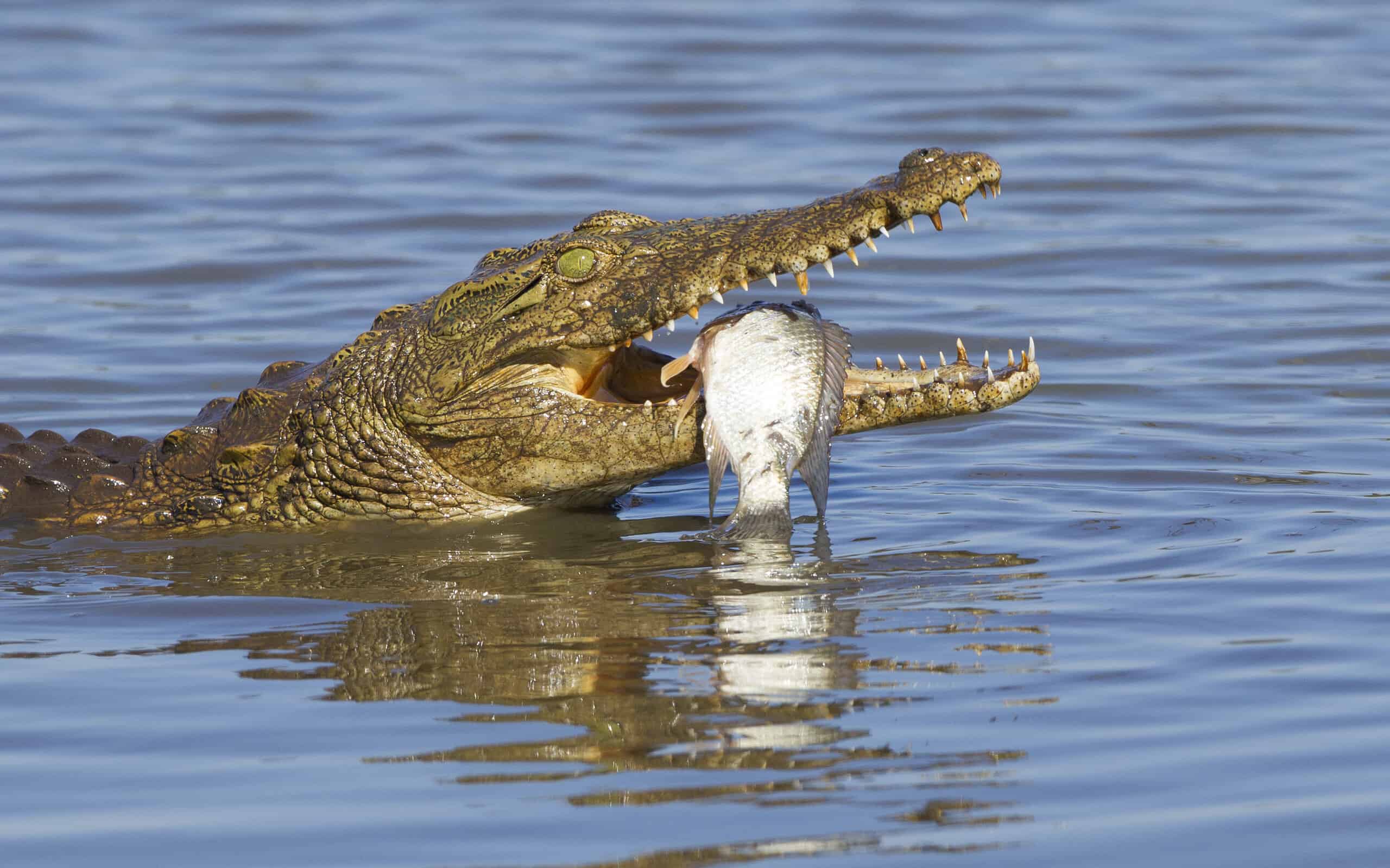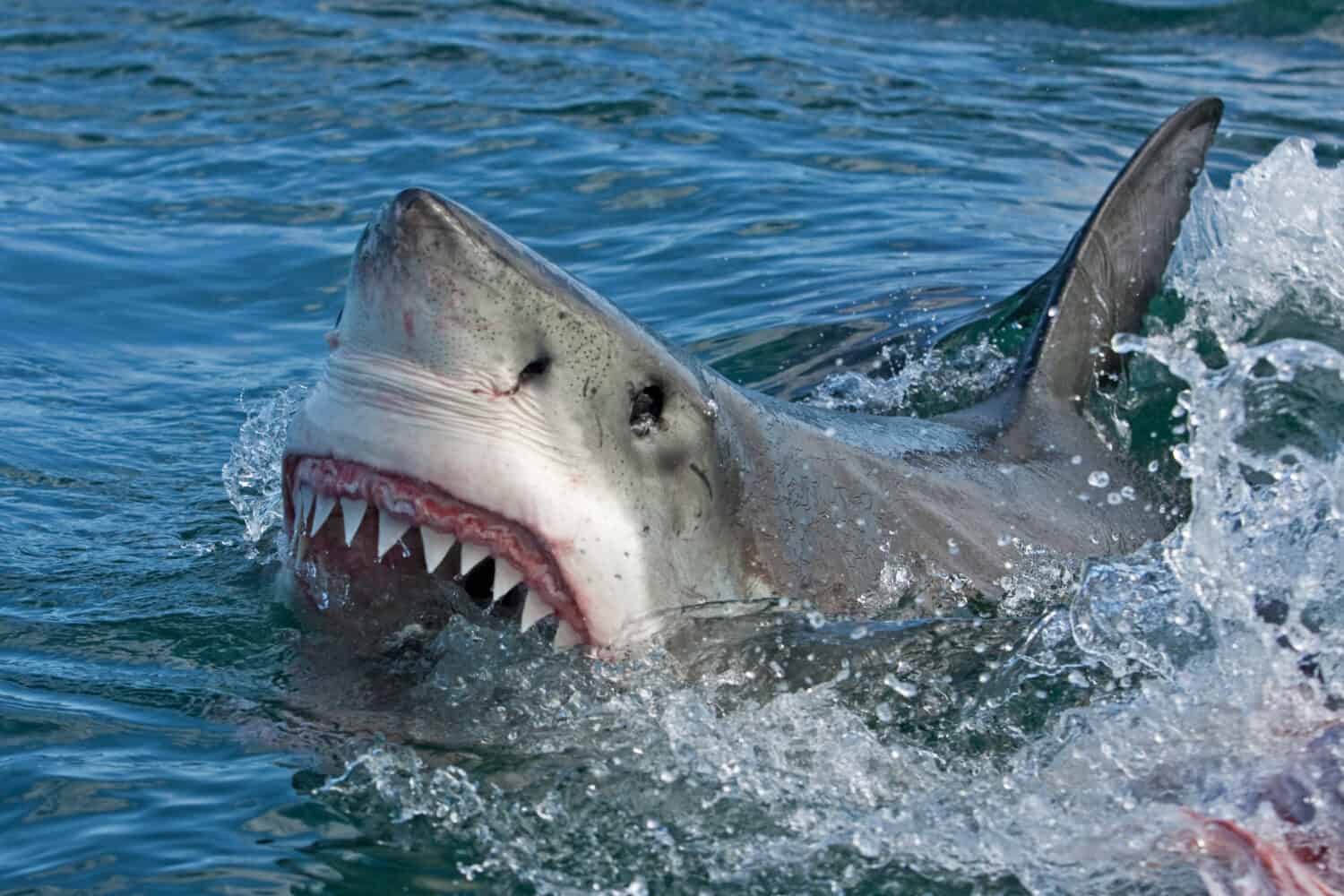For us humans, once our baby teeth fall out and our permanent teeth come in around six years of age, we’re stuck with that set for life. Damage, inconsistent hygiene practices, and unlucky teeth genetics can result in missing teeth if one is unable to afford expensive implants. For some animals, however, teeth are not such a precious, finite resource.
These critters, known as polyphyodonts, have adult teeth that can be replaced a limited amount of times or continually replace themselves throughout their life cycles. This contrasts with diphyodonts, like humans and dogs, with two successive sets of teeth. The advantage of polphyodontism, of course, is that damaged or worn teeth can be replaced every few weeks or months. In this guide, we’ll discover eight amazing animals with regenerating teeth.
Read on to learn more!
1. Crocodilians (Crocodylia)

Like this pictured Nile
crocodile
, Crocodilians have hollow teeth that regenerate in replacement pits.
©StuPorts/iStock / Getty Images Plus via Getty Images
All extant members of reptiles in the crocodilian order (Crocodylia) have regenerative teeth. This includes all species of crocodiles, alligators, caimans, the gharial, and the tomistoma (aka false gharial). For crocodilians, each tooth can be replaced up to 50 times throughout their lives. A crocodile (Crocodylidae) can go through 3,000 teeth in its lifetime!
Crocodilian teeth continuously replace themselves by growing inside the primary tooth. Since their teeth are mostly hollow, the old tooth is shed when the new tooth is fully formed. This also means if a tooth is ripped out during predation, a new tooth will either develop directly in its place or will already be in the process of forming.
2. Animal With Regenerating Teeth: Snakes (Sepentes)

Recently, scientists discovered that snake teeth replace themselves through the action of odontoclasts dissolving the inner dental pulp of the old tooth.
©OldGreyMan/iStock via Getty Images
All snakes of the infraorder Serpentes shed their teeth throughout their lives. Many snakes shed and regrow their teeth every six to eight weeks, especially venomous species like rattlesnakes (Crotalus spp.).
Interestingly, scientists weren’t quite sure of the exact mechanism for this replacement until recently. While other reptiles, such as the abovementioned crocodilians, have replacement pits from which the new teeth erupt, snakes don’t have this adaptation. In 2022, a paleontologist focusing on teeth discovered the mechanism for snake teeth replacement. When an old tooth is ready for replacement, odontoclasts enter the inner portion of the tooth and begin eating away at the dental pulp. This process reabsorbs the tooth from the inside out until it loses its connection to the jaw, allowing space for a new tooth to form.
3. Iguanas (Iguanidae)

Iguanas have pleurodont teeth with a rapid rate of replacement.
©iStock.com/adogslifephoto
Like crocodilians, lizards, such as iguanas (Iguanidae), have replacement pits from which new teeth erupt. Lizards can have pleurodont teeth, acrodont teeth, or a combination of both. Pleurodont teeth have no roots, are laterally fused to the inner surface of the jawbone, and are consistently replaced. Acrodont teeth have no roots, do not sit in a socket, are connected at the base of the jawbones, and are primarily only replaced during the juvenile stage of life.
Iguanas have pleurodont teeth with a rapid rate of replacement. On average, they can shed and replace about 500 teeth a year. Iguanas are born with their teeth, which increase in width as the individual grows. It typically takes several weeks or months for a new tooth to grow. About half the teeth in an iguana’s mouth are being replaced throughout their life.
4. Animals With Regenerating Teeth: Salamanders (Salamandroidea)

The palate and jaw teeth of a
salamander
continually replace themselves throughout the animal’s life.
©Rejdan/Shutterstock.com
Like all amphibians with teeth, salamanders (Salamandroidea) are polyphyodonts. These adorable little critters are born toothless but quickly develop them in their upper and lower jaw, with many larval forms featuring teeth. The teeth of larval salamanders are sharply pointed and cone-shaped, while the adult teeth are formed for grasping prey. Interestingly, patches of teeth grow along the palate of most salamander species.
Salamanders primarily use their jaw teeth to catch and grasp their prey. For some species, such as Triturus carnifex, the palate teeth may be used with the tongue as a simple form of chewing. All of these teeth types continuously replace themselves throughout the salamander’s life.
5. Sharks (Selachimorpha)

Most sharks possess between 5 and 15 rows of teeth that continuously replace themselves through a conveyor belt-like system.
©Martin Prochazkacz/Shutterstock.com
All species of modern sharks of the superorder Selachimorpha continuously replace their teeth throughout their lives. Most species of sharks possess between 5 and 15 rows of teeth.
For example, the great white shark (Carcharodon carcharias) has seven rows of highly serrated teeth. They can replace about 30,000 of these razor-sharp teeth in their lifetime. Their teeth non-permanently attach to the jaw cartilage with a soft, connective membrane called a tooth bed. This tooth bed acts like a conveyor belt that quickly moves teeth forward to replace lost ones. Sometimes, a missing tooth is replaced in as little as an hour.
6. Animals With Regenerating Teeth: Manatees (Trichechus manatus)

Manatees are one of the few polyphont mammals.
©tobiasfrei/iStock via Getty Images
While most polyphonts are not mammals, there are some exceptions. Both subspecies of manatees (Trichechus manatus) can replace lost teeth. All manatee teeth are molars designed to grind vegetation. Scientists call these molars, particularly, “marching molars,” which describes hind molar progression in which their teeth constantly shift forward. Adult manatees have 24-36 of these marching molars.
This horizontal movement along the jaw from back to front results in new teeth moving forward about a centimeter per month. When teeth are significantly worn down, the root is reabsorbed, causing the tooth to fall out. This strategy of root resorption and teeth replacement helps manatees adapt to having teeth that wear down through continuously grinding vegetation.
7. Kangaroos (Macropus spp.)

Kangaroos
only use the front two pairs of their molars for grinding down vegetation. These pairs are replaced by the rear molars.
©Gypsy Picture Show/iStock via Getty Images
While kangaroos grow one set of permanent, clipping incisors, they do have marching molars. Most grazers have open roots that allow for continuous growth of teeth throughout the animal’s life. This constant growth is how most grazers compensate for the wearing down of grinding teeth.
Kangaroos, however, have closed roots that do not allow for continuous teeth growth. Instead, they only chew with the forwardmost two pairs of molars on either side of their jaws. When those pairs of molars are worn down, the roots reabsorb, the tooth falls out, and the hind molars move forward to replace them.
Unlike manatees, which can continuously provide replacement molars, kangaroos only have four pairs of molars on each side of the jaw. When the last pair moves forward when the animal is about 15-20 years old, they have no replacements left. Twenty years is typically the maximum they can live, especially in the wild, with an average lifespan of 6-8 years.
8. Animals With Regenerating Teeth: Elephants (Elephantidae)

The chewing teeth of an
elephant
replace themselves about six times through the animal’s life.
©CherylRamalho/Shutterstock.com
Throughout their life, the chewing teeth of elephants (Elephantidae) are replaced about six times. Their tusks, however, which are modified incisors, can not be replaced if damaged. The cycle of teeth replacement in elephants is linked to their enormous size. While most mammals have one set of baby (deciduous) teeth and one set of adult (permanent) teeth, elephants must undergo six sets to compensate for their jaw growth.
The new teeth erupt from the back of the mouth and move forward, pushing the old teeth out. Sometimes, two sets of teeth are present at once, allowing the elephant to chew more efficiently and process more food.
The photo featured at the top of this post is © MP cz/Shutterstock.com
Thank you for reading! Have some feedback for us? Contact the AZ Animals editorial team.







